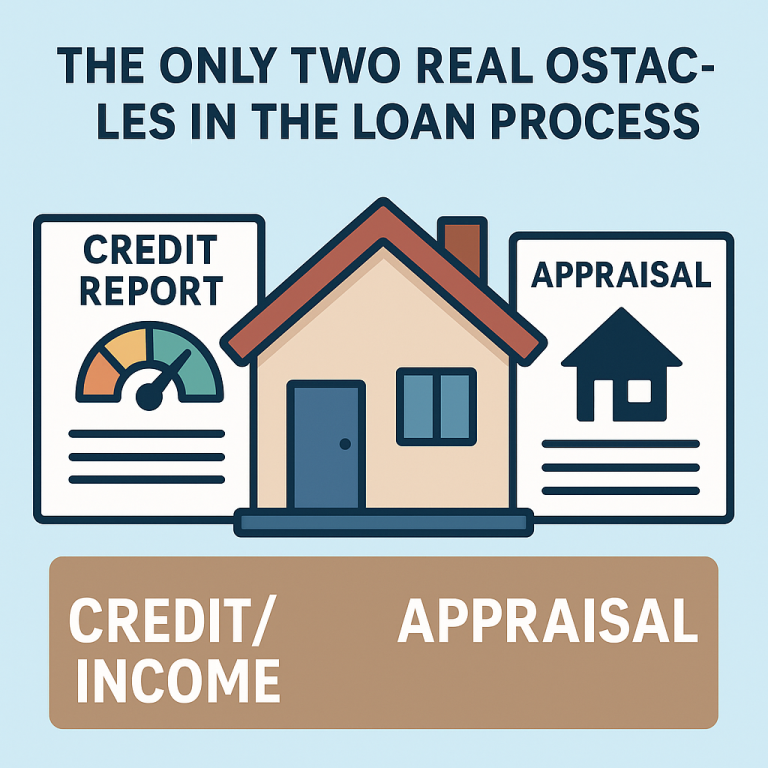When Seller Carry Financing Makes Sense
For some buyers, qualifying for a traditional mortgage isn’t always possible—or practical. Maybe the property is too unique for a conventional loan, or the buyer’s credit profile doesn’t meet lender standards. In specific cases like these, seller carry financing—also called seller financing or owner financing—can bridge the gap and help both buyer and seller achieve their goals. It is not mainstream, but when used thoughtfully, it can be a strategic tool.
What Seller Carry Financing Is (and Isn’t)
Seller carry financing happens when the seller acts as the lender. Instead of the buyer borrowing from a bank, the buyer makes payments directly to the seller. The parties negotiate the interest rate, monthly payment, and loan duration, and then formalize those terms in a promissory note and a deed of trust recorded with the county. These agreements can be flexible, but they should still follow market norms and be documented by professionals so both sides are protected.
In many cases, the buyer makes a down payment—often 10% to 30%—and the seller “carries” the remaining balance as a private loan. Payments are typically fixed each month. Some structures include a balloon payment, where the remaining balance comes due after a set number of years, requiring the buyer to refinance or pay off the loan in full at that time. If you want a deeper dive on mechanics, see How does seller carry financing work to buy a home?.
When Seller Carry Financing Makes Sense
- Credit or income challenges: Buyers with solid income but limited credit history, recent life events, or a short employment runway may not clear traditional underwriting today. Seller financing can offer a structured on-ramp to ownership while the buyer shores up their file for a future refinance.
- Hard-to-finance properties: Homes with condition issues, nontraditional layouts, rural attributes, or mixed-use elements can be tough for banks to fund. A seller-financed structure can allow a practical, “as-is” path to closing while repairs or improvements are planned.
- Faster closings: Without layers of institutional underwriting, closings can sometimes happen more quickly—useful when timing, moving plans, or market dynamics demand speed.
- Income stream for the seller: Rather than taking one lump sum, a seller can earn interest over time, which may align with retirement or cash-flow goals.
Seller carry can also complement other strategies that improve affordability. For example, using seller credits to offset closing costs or buy down the interest rate can widen buying power and smooth monthly cash flow. For a practical overview, check out How seller credit maximize your purchasing power.
Key Risks and How to Mitigate Them
- Higher interest rates: Private financing often commands a premium because the seller assumes risk. Make sure the rate is defensible and reflected accurately in the note.
- Shorter terms & balloon payments: Many deals are designed as a bridge (five to ten years). If there’s a balloon, confirm you’ll reasonably qualify to refinance before it arrives.
- Due-on-sale exposure: If the seller still has an existing mortgage, a transfer could trigger a lender’s due-on-sale clause. When possible, structure seller carry on properties owned free and clear.
- Default and remedies: Both sides should understand late fees, cure periods, and foreclosure remedies. Clear language reduces conflict later.
- Ongoing obligations: Spell out who pays taxes, insurance, and maintenance; ambiguity here is a frequent source of disputes.
Structuring It the Right Way
Use a real estate attorney and a reputable escrow/title company. Document everything: interest rate, amortization, payment dates, grace periods, default language, late fees, prepayment terms, and balloon details if applicable. Record the deed of trust, verify title, and ensure hazard insurance is properly set up with the right mortgagee clause. Aim for a structure that allows the buyer to refinance later into standard financing once credit improves or repairs are completed.
Bottom line: seller carry financing is best viewed as a targeted, time-bound strategy. It can unlock a purchase that would otherwise stall, help a buyer stabilize their profile, and allow a seller to convert equity into a predictable income stream. With clear terms, proper documentation, and a realistic plan to refinance when eligible, it can be a win-win in a narrow but very real set of scenarios.
Looking to get a mortgage? Get a complimentary mortgage rate quote now.
Share:
RELATED MORTGAGE ADVICE FROM SCOTT SHELDON
VA and FHA Loans in Community Property States
If you’re applying for a VA or FHA mortgage in a community property state—such as…
When to Rent Instead of Buy: Key Situations Where Renting Makes More Sense
Buying a home is often described as the ultimate step toward financial independence, but it…
Does to make sense to cash refinance to consolidate debt?
Rising credit card balances and high-interest personal loans can put a strain on your monthly…
View More from The Mortgage Files:
begin your mortgage journey with sonoma county mortgages
Let us make your mortgage experience easy. Trust our expertise to get you your best mortgage rate. Click below to start turning your home dreams into reality today!



